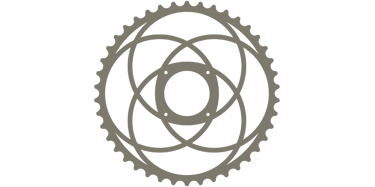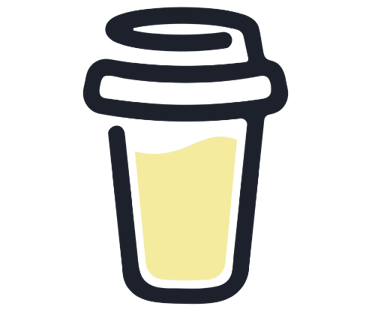A universal passport
Since the start of the expedition, we have been travelling with a few companions that we keep warm in our bags. These are our tools. To the reflection of many: "you are crazy! It must weigh an arm", we answer them that if we had to get rid of something on our bikes, our tools would be the last ones we would leave. For they represent what we are: workers on a journey, and allow us to work and continue our journey.
JOURNAL DE BORD
Orianne Pieragnolo
4/19/20234 min read

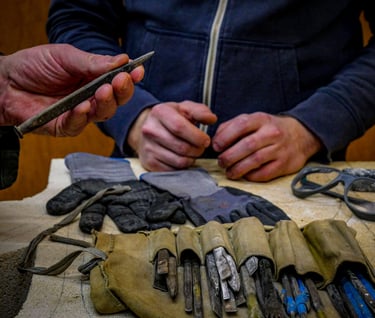
Outside, it is still raining. We hurriedly knocked on the big metal door of the Vienna Bauhütte. Our bikes are loaded and ready to go. Raphaël opens the door for us. This is our last evening in this city. We have to say an umpteenth goodbye to all our colleagues and friends who have welcomed us so well. For the occasion, one of them had proposed to spend this moment in the cathedral workshop. So we couldn't refuse...
Around the half-cut stones, we laugh, talk about stones and the building site. But some of us don't know each other that evening. So introductions are made by walking through the workshop, but above all by opening each person's toolbox. Just as when a host opens his door, the craftsman who presents his tools invites the other to step through his door. He agrees to reveal the heart, not of his house, but of his work.
Outside, it is still raining. We hurriedly knocked on the big metal door of the Bauhütte¹ in Vienna. Our bikes are loaded and ready to go. Raphaël opens the door for us. This is our last evening in this city. We have to say the umpteenth goodbye to all our colleagues and friends who have welcomed us so well. For the occasion, one of them had proposed to spend this moment in the cathedral workshop. So we couldn't refuse...
The identity of the tool
Originally the blacksmith
In Hungary, a big surprise awaits us. While we are working in Soskut's workshop, a stonecutter tells us about a blacksmith in Budapest who is famous for his tools. That's all it takes for us to go there. Accompanied by our colleague, we arrive in the "kőfaragó" (Hungarian for "stonecutter")* district of Budapest. On a whole avenue, dozens of stone-cutting companies, specialised in funerary work, are lined up. Caught between two piles of stone, a small house belches out greasy smoke. It bears a yellow sign indicating the master of the place, a master blacksmith: Olah Mihaly. Behind the still green carpentry, we discover the workshop. Black. The soot of three generations has accumulated there. This blacksmith enjoys a certain notoriety thanks to the apparently remarkable quality of his tools. Olah Mihaly shows us the supplies he has in stock: sledgehammer, gradine, bush hammer... Caught by the desire to buy everything, we slow down and order only a few scissors.
We leave with stars in our eyes. This is the first time we have bought our tools from a blacksmith. It reminds us that it is important for each craftsman to be able to collaborate, without the intermediary of a shop or the screen of an e-shop. That the interaction between professionals is essential and extremely enriching. We picked up our purchases a week later and already know that when we use them, we will relive that moment in our minds with the laughing eyes of Olah Mihaly.
So our kits have changed a lot since 10 July. We have given away some of our tools and received others from our colleagues. On our bikes, in the front panniers, these tools are kept close to us, like a shield. If a mishap should occur, far more precious than anything else, we have our tools! So we have fun imagining that, if in a small street, a malevolent group approached us, we would have this fabulous reflex to take out chisels and clubs in the air, while shouting: "stone cutters, stone cutters! ". Calming down, we would then put the tools on the ground. The others would inspect them, understand, laugh. Then, with a pat on the shoulder, an air of good, bad and ugly, we would finish up over a shared drink. Yes, we like to think that our tools can be our universal passport.





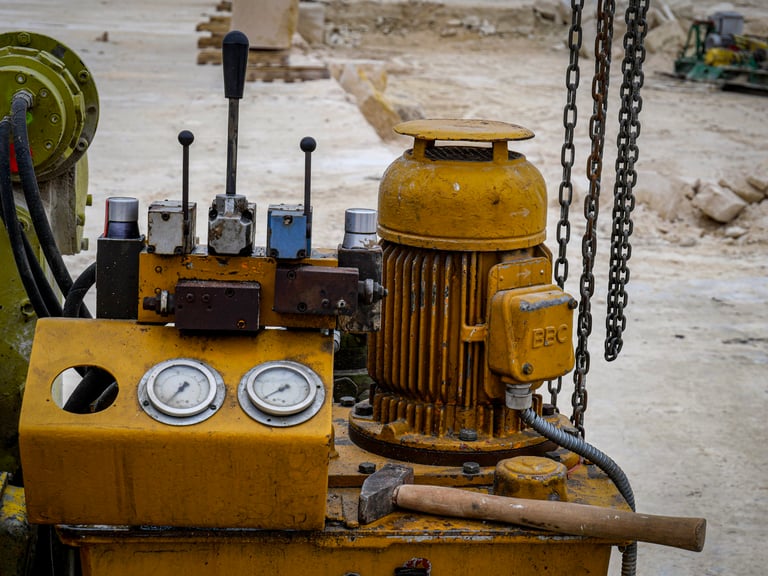






Soskut quarry, cutting of stone blocks
Do you like our posts ?
Help us by offering a coffee!

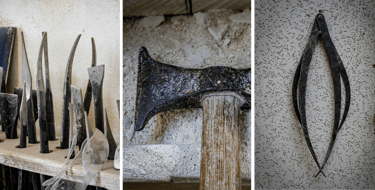
Around the half-cut stones, we laugh, talk about stones and the building site. But some of us don't know each other that evening. So introductions are made by walking through the workshop, but above all by opening each person's toolbox. Just as when a host opens his door, the craftsman who presents his tools invites the other to step through his door. He agrees to reveal the heart, not of his house, but of his work. In a workshop, or on a building site, this ritual is common and universal. It is a way of showing a part of one's personality, even one's identity. Toolboxes are often a reflection of the person. Since we left, we have seen tools that are impeccably stored and cared for, each with the owner's mark as a craftsman² engraved on the side. Others are part of an impressive collection worthy of an Ali Baba's cave, or they are the lucky few in a minimalist toolkit. The tool is therefore intimate, it is shaped by the hands that use it and carries with it the heritage and culture of the craft in a given region.
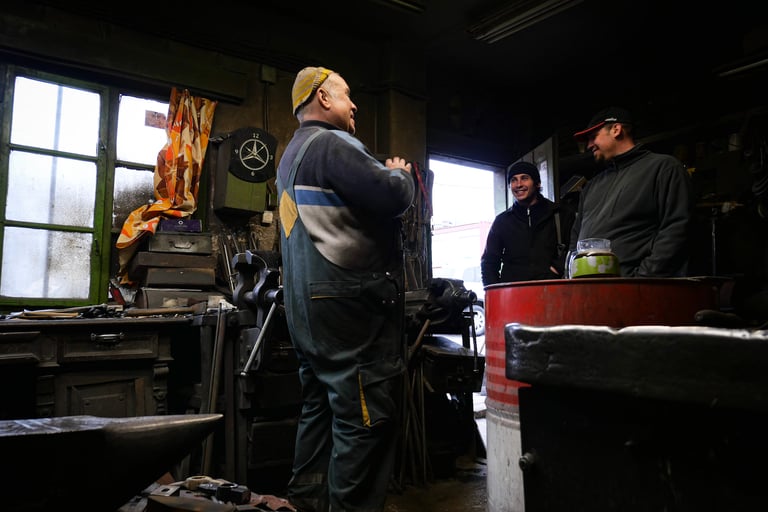


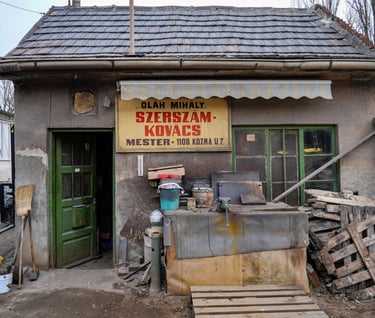
Caption (from left to right):
Pliers and blacksmith's tools in Olah Mihaly's workshop
Tools in stock forged by Olah Mihaly.
Workstation of a colleague in the Soskut workshop
Tools used at the Bauhütte in Vienna
Hands of Olah Mihaly
Controls of the cutting machine in the Soskut quarry.
Olah Mihaly's forge
Discover the other articles ...
La Route de la Pierre newspaper
Discover the other articles ...
La Route de la Pierre newspaper
Do you like our articles?



Follow the project ...
Editorial by the La Route de la Pierre team
©️La Route de la Pierre | Legal Notice | Privacy Policy | General Terms and Conditions of Sale
